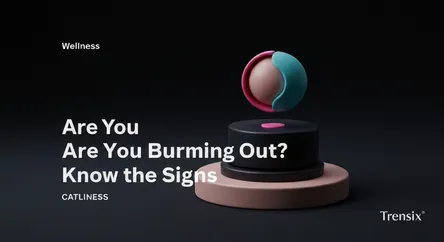Wellness
Are You Burning Out? Know the Signs

Learn to recognize the key signs of burnout, from emotional exhaustion to reduced accomplishment, and understand why it's a growing modern concern.
What is it?
Burnout is an occupational phenomenon resulting from chronic, unmanaged workplace stress. It is not classified as a medical condition but is recognized by the World Health Organization (WHO). Burnout is characterized by three key dimensions: feelings of energy depletion or exhaustion; increased mental distance, cynicism, or negative feelings related to one's job; and a sense of ineffectiveness or lack of accomplishment. Unlike stress, which involves feeling overwhelmed but still able to manage, burnout leaves individuals feeling empty, mentally exhausted, and devoid of motivation.
Why is it trending?
Burnout has become increasingly common in recent years due to an ever more demanding and competitive modern workplace. Factors like excessive workloads, long hours, and the blurring of boundaries between work and personal life, particularly with the rise of remote work and constant connectivity, contribute significantly. The COVID-19 pandemic amplified these stressors for many, especially in high-risk fields like healthcare and education. There is also a growing societal awareness of mental health and well-being, leading more people to identify and discuss their experiences with burnout.
How does it affect people?
The negative effects of burnout spill over into every area of a person's life. Physically, it can manifest as chronic fatigue, insomnia, headaches, and a lowered immune system. Emotionally and mentally, it leads to a sense of failure, helplessness, and a cynical outlook. This can strain personal relationships and lead to social withdrawal. Professionally, burnout results in reduced productivity, lack of creativity, and increased absenteeism. If left unaddressed, chronic burnout can increase the risk of developing more serious conditions like anxiety, depression, and heart disease.